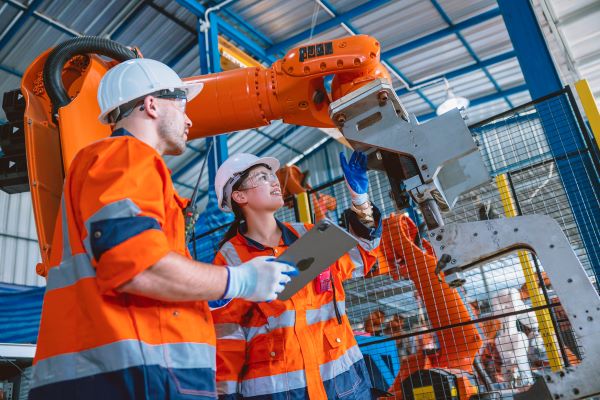Many industries focus heavily on diversity now, which is a great thing. But one aspect of human variety often overlooked in these discussions is the spread of generations within the workforce. Right now it is likely in many organizations that four generations of workers are contributing to success side by side. In some workplaces, there may even be five.
One workplace, four generations
Sharing the shop floor and factory canteen every day at many manufacturers (and in our own office here at Canvas GFX), we now have:
- Baby Boomers, born between 1946 and 1964
- Gen-X, born between 1965 and 1980
- Millennials, born between 1981 and 2000
- Gen-Z, born in or after 2001
Just think about this for a second: each of these generations grew up in different worlds. Each is in a different phase of life, is motivated differently, learns differently, approaches technology differently, and, most salient here, I think – communicates differently.
How does this affect the way we all work together, day-to-day?
Unhelpful stereotypes
Much of the narrative around intergenerational differences in the workplace tends towards the negative and perpetuates unhelpful stereotypes.
Boomers are characterized as closed-minded old technophobes, stuck in their ways. Gen-Zers are painted as entitled, work-averse youngsters out of touch with the ways of the real world. And the Millennials? One foot in both worlds!
I don’t subscribe to these stereotypes – they’re reductive and myopic – but I do believe organizations need to find ways for these different generations to manage communication more effectively.
Intergenerational language barrier
In my experience, the intergenerational language barrier is very real, and it needs to be managed correctly if we’re to build happy, successful, effective teams.
We do not all speak the same language – how could we, given the vastly different ways we all grew up? And, yes, sometimes our different communication styles and approaches can cause friction and misunderstandings at work.
But with a more considered, inclusive approach to communication in the workplace, an open-mindedness to varied experiences and backgrounds, and a respectful acknowledgement of how generational differences can come into play in the ways we talk to and understand one another, the intergenerational language barrier is easily busted.
It starts with an urgent re-writing of the generational stereotypes which hamstring collaboration and cooperation among the team. Instead of a crotchety old boomer, you may find a battle-worn veteran, holding 30+ years of invaluable institutional knowledge. Instead of an irresponsible, lazy Gen-Zer, you may find a creative, tech visionary with a unique understanding of how digital living can be translated into digital working.
Lean into the differences
Far from pretending generational differences don’t exist, I think we should be leaning into them, leveraging these different backgrounds and experiences and identifying the ways in which they have equipped each generation with a unique set of strengths that can be applied in creative, collaborative ways to optimize performance and innovation.
Because a multigenerational workforce is far from a liability. In fact it can be an organization’s biggest asset.
Acknowledging and accepting our generational differences, factoring them in, adjusting our communication strategies and styles to accommodate them, and then finding ways to lean into those differences by playing to everyone’s strengths is how we build stronger, more dynamic teams.
Wisdom and innovation
If we can break the intergenerational language barrier, we can mine the wisdom of the boomers and marry it with the fresh, creative perspectives and tech-savviness of the younger generations to build a future-proofed workforce.
So, do you speak millennial? How about Gen-Z? And if you’re Gen-Z, can you find that common ground with colleagues old enough to be your parents?
You know what they say: it’s never too late to learn a new language.



